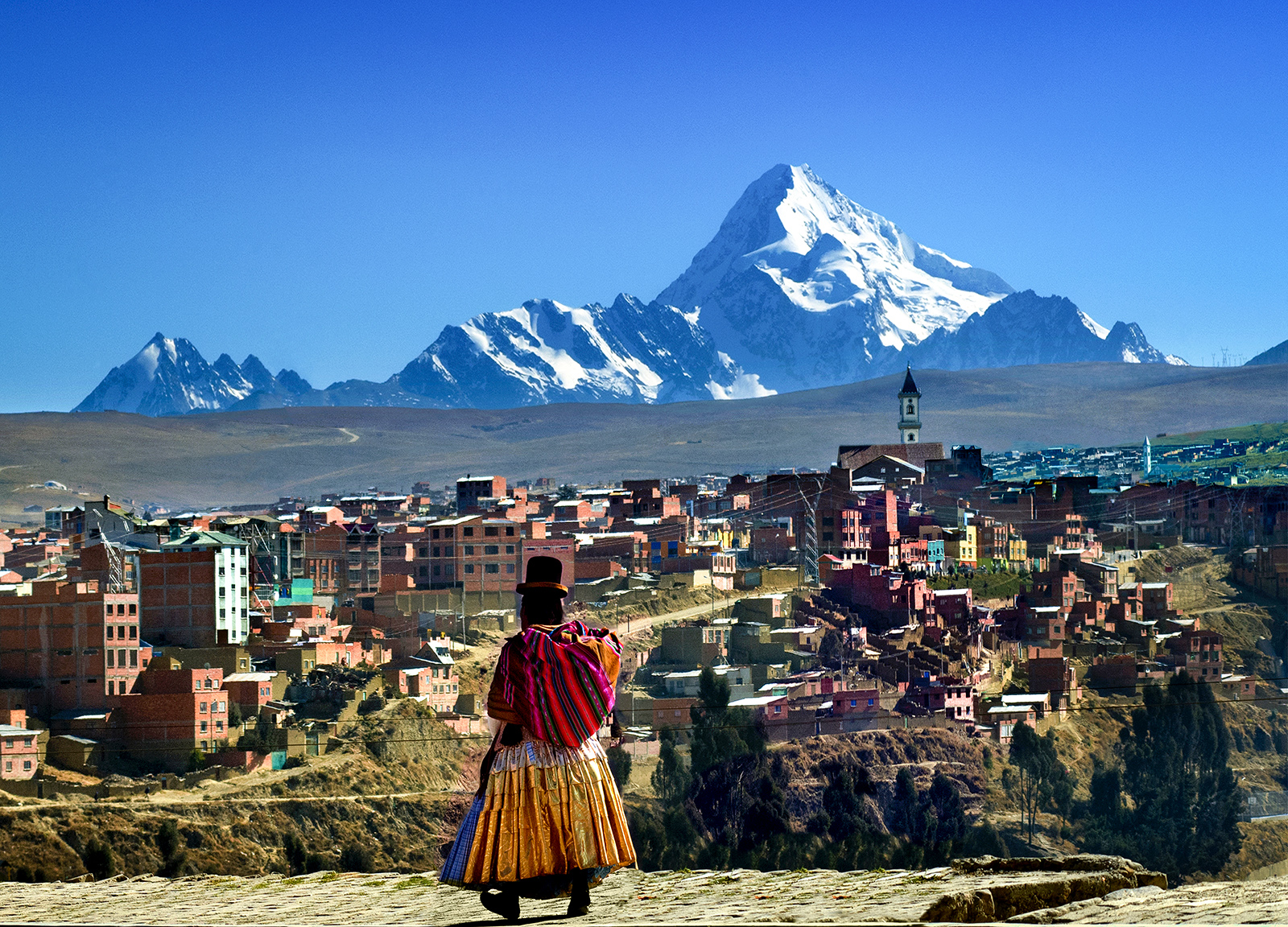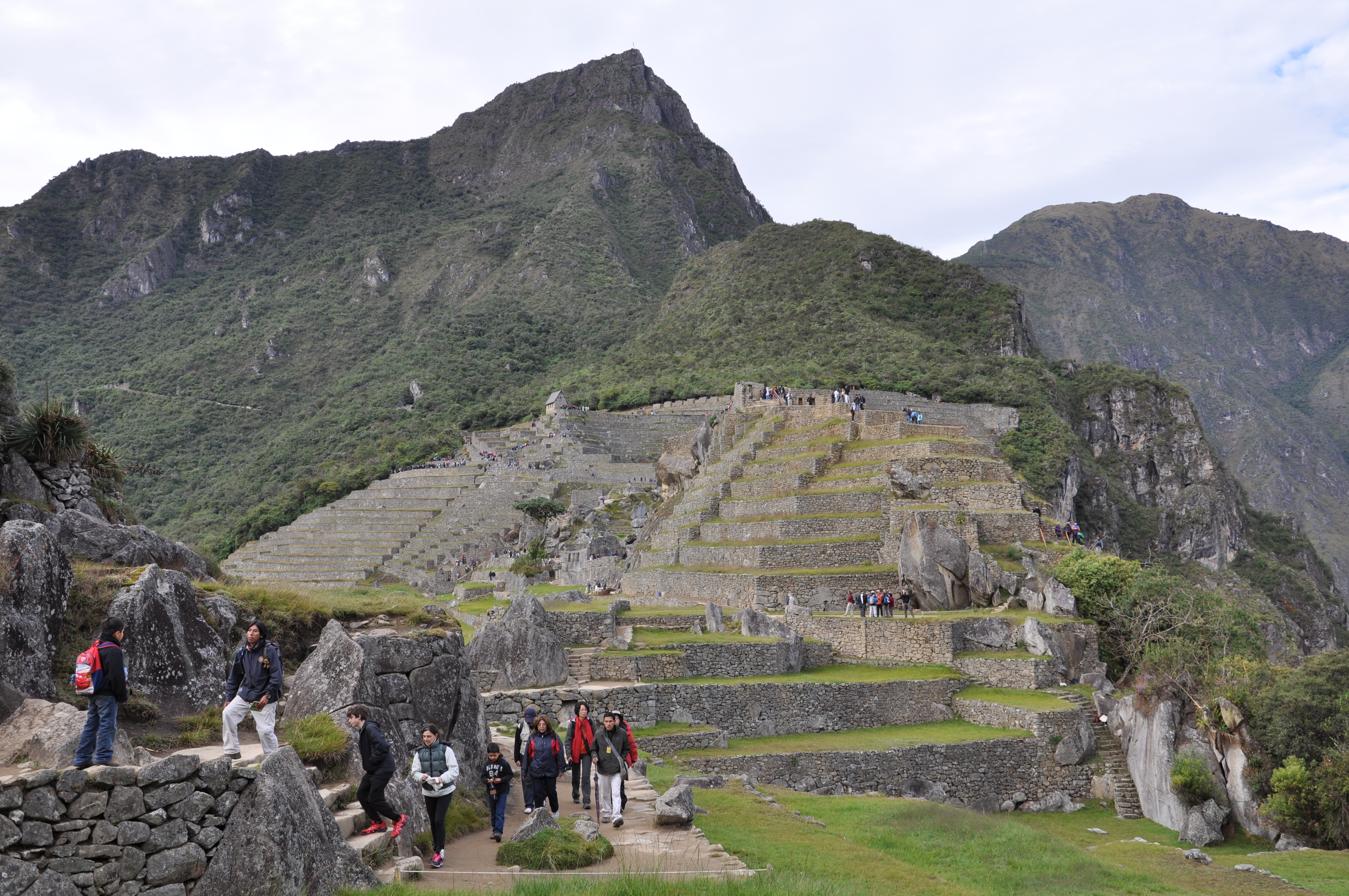
La Paz is the largest and most populated urban centre in Bolivia, with over three million inhabitants. The city’s downtown sits at 3650 metres above sea level and its highest point reaches 4080 metres. It is here where the local culture and several unforgettable activities converge.

As soon as the plane lands in El Alto International Airport (LPB), some of the passengers can feel the symptoms of altitude sickness: the typical physical discomfort caused by being over 4000 metres above sea level. It is nothing serious, only a feeling of fatigue and suffocation that will go away in a day or two as the body gets used to the new environment. If you are one of the unlucky ones that end up being severely affected by altitude sickness, then grab a coca leaf tea to relieve the symptoms and get your body back on track. From the airport, buses and taxis depart on a regular basis and take visitors downtown, to 3650 metres above sea level. It is a 14km long descent that gives way to the breathtaking scenery of a city surrounded by hills and mountains. Taxi drivers are always willing to stop at one of the many lookouts located on the route so take a chance to snap some decent panoramic photos.

In terms of food, Bolivia is the largest producer of royal quinoa in the world. The size of the grain is 5 to 6 times larger than regular quinoa. Native to the southern Altiplano – home to thousand year old plantations, quinoa is Bolivia’s most prized possession and a staple in most traditional dishes that are today being rediscovered with modern touches used in New Andean or New Bolivian cuisine.

You cannot leave La Paz without trying its flagship dish: the classic salteña, a type of pastry that can be eaten at breakfast or a mid-morning snack. It is a sweet, crunch dough that goes well with minced meat stuffing, potatoes, onions chilli, peas, hard-boiled eggs and cumin.

A stroll along Avenida 16 de Julio – also known as El Prado – takes you to the Baroque San Franciscan Church, which was built in 1970. Inside you will find an art gallery that holds a valuable collection of Renaissance, Baroque and Neoclassical paintings. Mercado Rodriguez is the oldest street market in La Paz. It stretched out for several blocks along Rodriguez Street, and there are stalls inside and outside the market. Everyday, Aymara women come here to sell a wide variety of fruits and vegetables.

For the shopaholic, you have to visit the popular Mercado de Las Brujas (witches’ market), a series of stalls and galleries between Sagarnaga and Santa Cruz streets. Here you can find handicrafts, herbs and interesting objects used in Aymara rituals, such as dried llama foetuses. You will also probably find South America’s largest and best supplied stock of Altipano aguayos (hand sewn textiles dyed with natural pigments), along with a variety of tapestries and embroideries – a testament to the indigenous population’s exquisite craftsmanship.

Within the same area, you should visit Walisuma, a store that is part of a project that gathers the work from several Bolivian craftsmen who work alongside designers to create clothing, accessories and handicrafts while preserving their ancestral craftsmanship techniques. Such products include knitwear made with alpaca wool untangled by hand and purses made from llama, kid and surubi – a typical fish from Titicaca lake.

It is true that La Paz surrounds you: you’ll love it, you’ll hate it, but you can’t ignore it. The city seems to have reinvented itself at every turn – a jaw-dropping subway in the sky brings you from the heights of El Alto to the depths of Zona Sur in the blink of an eye. Standing hotels are remodeled at a manic pace, and new boutique hotels are springing up like rows of altiplano corn. Check out La Paz as it will amaze those who visit!



